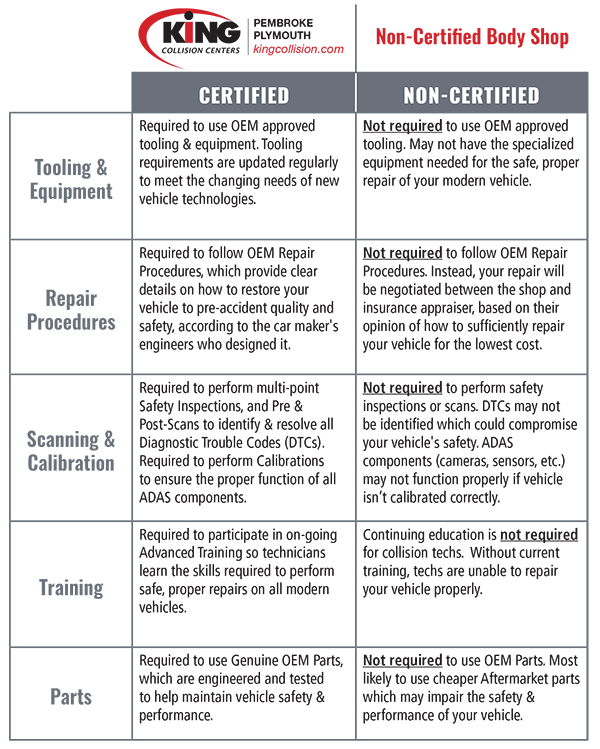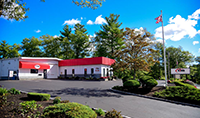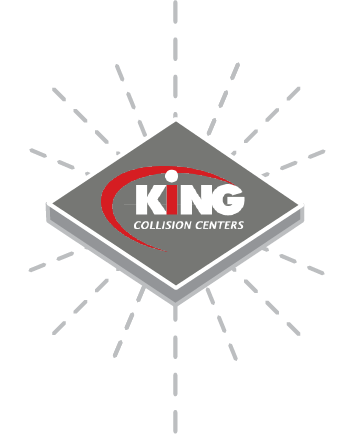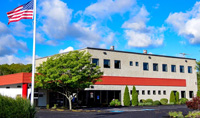Only certified collision centers must adhere to strict OEM requirements for tooling, training, parts, scanning, and repair procedure usage to ensure the highest quality repair outcomes. Car makers audit certified shops annually to validate compliance with their certification program rules. Only certified repairs are guaranteed by car makers.
Insurance referral shops are not the same as Certified Collision Centers. Insurance referral shops do not need to be certified and likely do not meet the same standards for tooling, training, parts, scanning or repair procedures that are required by car makers for certified collision centers. In most instances, insurance referral shops have agreed to cheaper repair standards that save the insurer money in exchange for the insurance company’s referral business.
We created this table to summarize the key differences between certified and non-certified shops to help you make an informed choice:

We do work with your insurance company, and they will pay for your repair at King Collision. However, we have voluntarily removed ourselves from some insurance programs that don’t align with our commitment to delivering only the highest quality, certified repairs.
King Collision Centers repairs are backed by our Lifetime Warranty and certified repairs are Guaranteed by your car maker. Since our repairs comply with factory specifications, your vehicle manufacturer’s warranty will likely remain intact for certified repairs.
As collision repair professionals, it is the general policy of King Collision Centers to use only new, genuine OEM parts for the repair of vehicles. We care about the safety of you and your passengers, and OEM Parts are the only parts tested to ensure the operational safety of your vehicle. We repair vehicles in accordance to their manufacturer’s repair specifications, which call for the use of OEM Parts.




